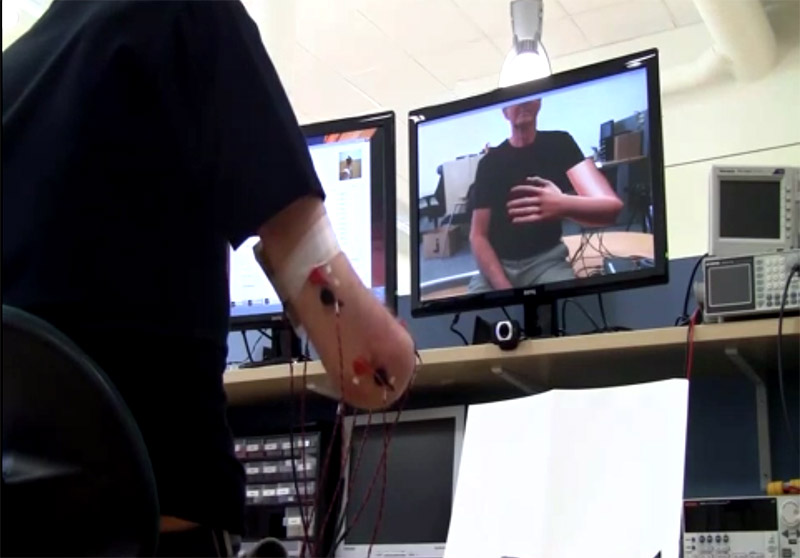Phantom Movements in VR Ease Phantom Limb Pain
Swedish researchers reported that a group of amputees had lasting and clinically meaningful reductions in phantom limb pain thanks to the exercise of their phantom limbs using video gaming and augmented reality. This group of patients had the condition for many years and weren’t using other treatments.

Phantom Motor Execution Treatment
That is the name of the treatment invented by Max Ortiz Catalan, a doctor from the Chalmers University of Technology in Gothenburg, Sweden. The Phantom Motor Execution was developed by him and his team over the past years.
The treatment uses neuromuscular signals sent from the amputated limbs to control virtual and augmented environments. Electrodes on the patient’s arm stump pick up the electrical signals in the muscles. The signals go to a computer that is able to decode and use them to generate a virtual arm on the screen, one that resembles the missing limb. This is supposed to help the patient reactivate the areas of his/her brain that were used to control the limb movements before being removed. Researchers claim this is the reason why the phantom limb pain decreased afterward.
A study of 14 patients who had amputations of one upper-limb and were experiencing intractable chronic phantom limb pain was carried out to look for results. The patients were instructed to move their virtual limbs in a simulation where they had to drive a car around a track while using phantom movements. Each patient had 12 sessions of two hours of virtual treatment.

Virtual Reality can Actually Reduce Phantom Pain
The Lancet published the study online on December 1st of 2016 and it includes a video that describes how the treatment works.
“We selected the most difficult cases from several clinics. We wanted to focus on patients with chronic phantom limb pain who had not responded to any treatments. Four of the patients were constantly medicated, and the others were not receiving any treatment at all because nothing they tried had helped them. They had been experiencing phantom limb pain for an average of 10 years.”
Dr. Ortiz-Catalan said in a university statement.
The researchers studied the changes in intrusion, quality, duration, frequency, and intensity of phantom limb pain using a study-specific frequency scale, the weighted pain distribution scale, the pain rating index, a the numeric rating scale before each treatment session and at several follow-up interviews one, three, and six months after the last session.
The research team reports that patients showed clinically and statistically significant improvements in all measures of phantom limb pain after the 12 sessions of virtual reality treatment. Phantom limb pain decreased by 47% on the Weighted Pain Distribution Scale, 32% on the Numeric Rating Scale, and 51% on the Pain Rating Index.
https://virtualrealitytimes.com/2017/03/12/phantom-movements-in-vr-ease-phantom-limb-pain/https://virtualrealitytimes.com/wp-content/uploads/2016/12/amputee-sweden-tests-virtual-reality-game-that-can-remove-phantom-limb-pain-600x419.jpghttps://virtualrealitytimes.com/wp-content/uploads/2016/12/amputee-sweden-tests-virtual-reality-game-that-can-remove-phantom-limb-pain-150x90.jpgHealthSwedish researchers reported that a group of amputees had lasting and clinically meaningful reductions in phantom limb pain thanks to the exercise of their phantom limbs using video gaming and augmented reality. This group of patients had the condition for many years and weren't using other treatments. Phantom Motor Execution...Pierre PitaPierre Pita[email protected]SubscriberTrue gamer and very passionate about gadgets and new technologies. Virtual Reality is the future and geeks like us are ruling the World.Virtual Reality Times - Metaverse & VR
